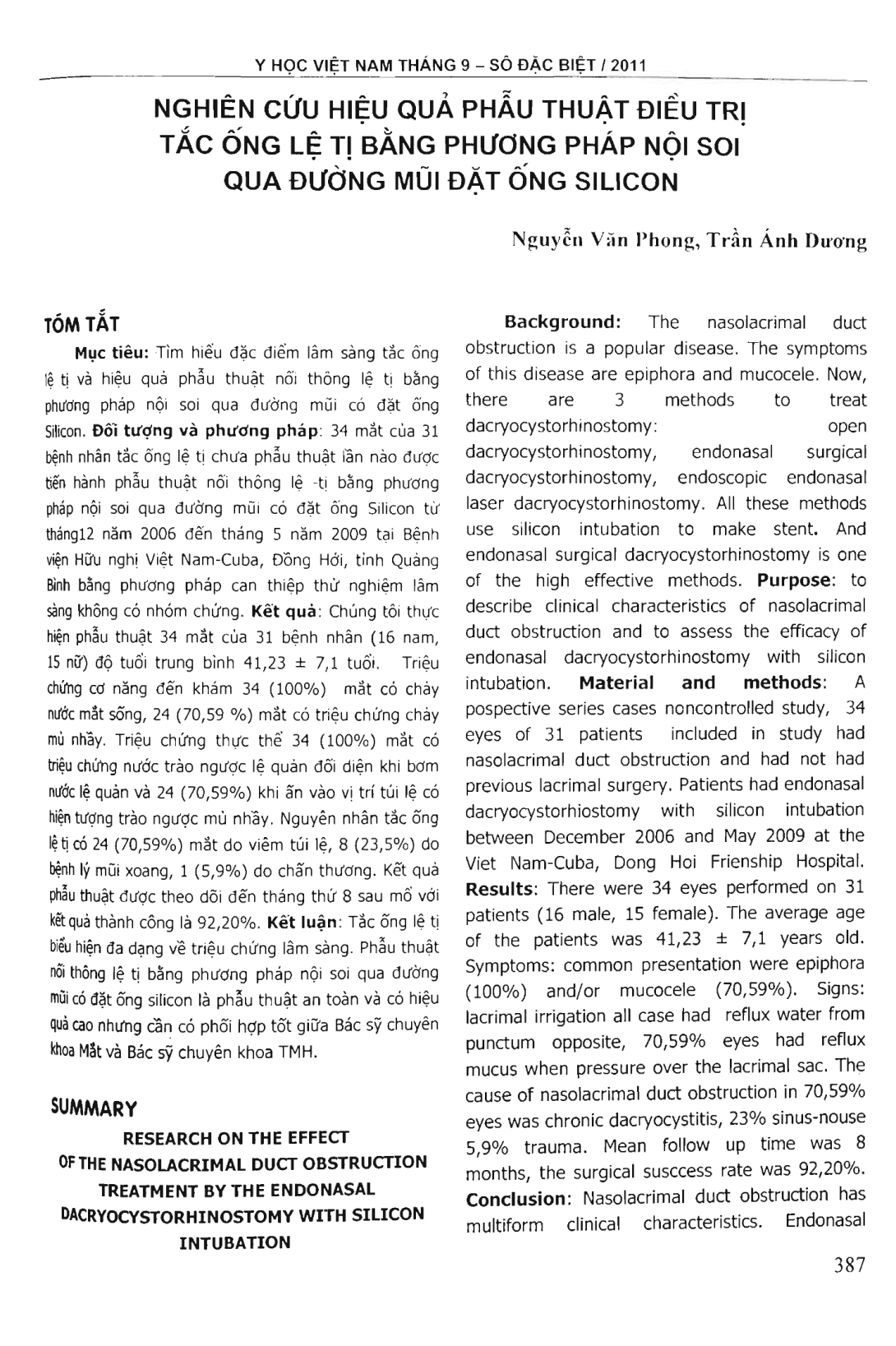
Background: The nasblacrimal duct obstruction is a popular disease. The symptoms of this disease are epiphora and mucocele. Now, there are 3 methods to treat dacryocystorhinostomy: open dacryocystorhinostomy, endonasal surgical acryocystorhinostomy, endoscopic endonasal laser dacryocystorhinostomy. All these methods use silicon intubation to make stent. And endonasal surgical dacryocystorhinostomy is one of the high effective methods. Purpose: to describe clinical characteristics of nasolacrimal duct obstruction and to assess the efficacy of endonasal dacryocystorhinostomy with silicon intubation. Material and methods: A pospective series cases noncontrolled study, 34 eyes of 31 patients included in study had nasolacrimal duct obstruction and had not had previous lacrimal surgery. Patients had endonasal dacryocystorhiostomy with silicon intubat~n between December 2006 and May 2009 at the Viet Nam-Cuba, Dong Hol Frienship Hospital. esults: There were 34 eyes performed on 31 patients (16 male, 15 female). The average age of the patients was 41.23 + or - 7.1 years old. Symptoms: common presentation were epiphora (100 percent) and/or mucocele (70.59 percent). Signs: lacrimal rrigation all case had reflux water from punctum opposite, 70.59 percent eyes had reflux mucus when pressure over the lacrimal sac. The cause of nasolacrimal duct obstruction in 70.59 percent eyes was chronic dacryocystitis, 23 percent sinus-no use 5.9 percent trauma. Mean follow up time was 8 months, the surgical susccess rate was 92.20 percent.
- Đăng nhập để gửi ý kiến
